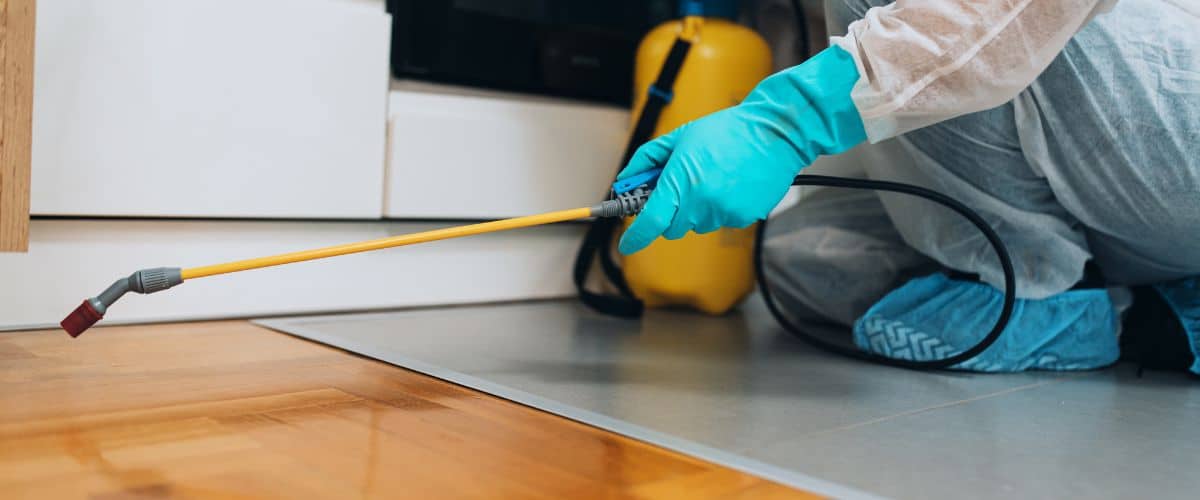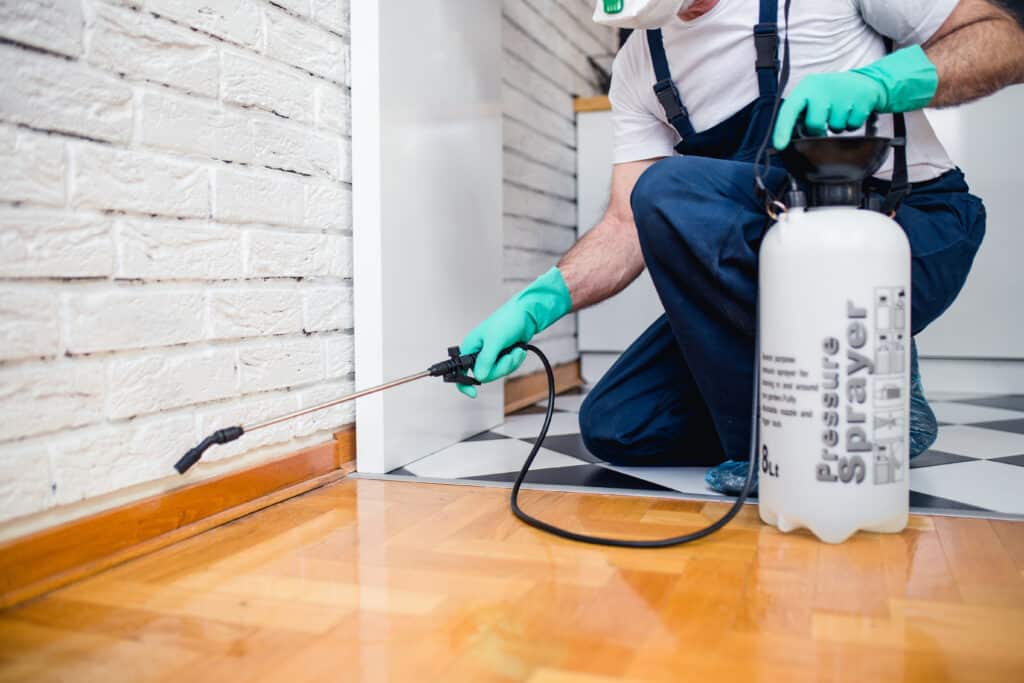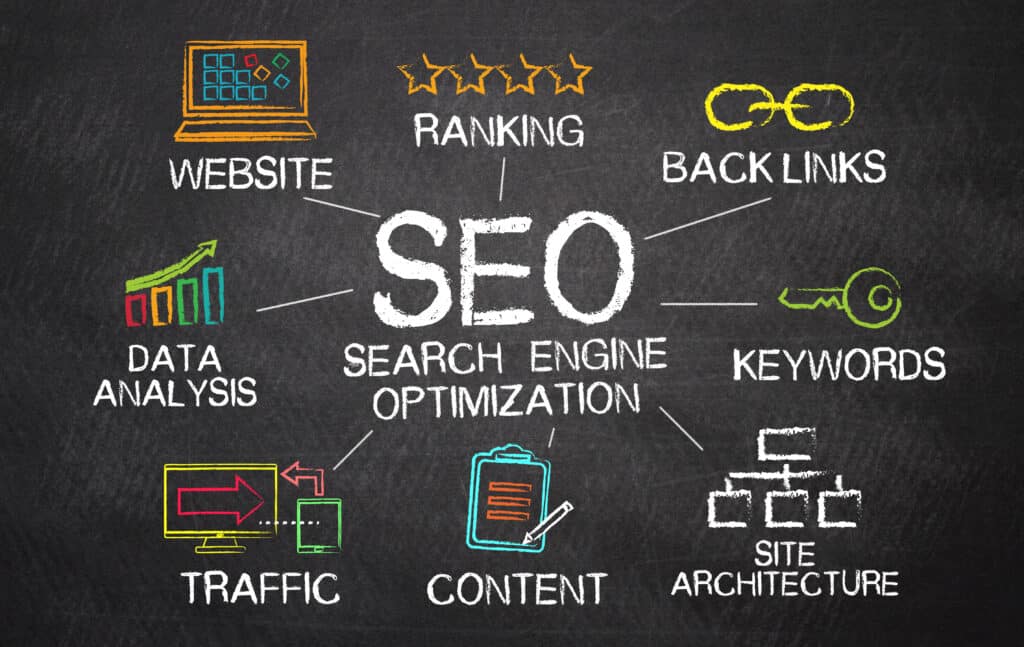
Pest Control Marketing Ideas: The Art of Pest Control Ads
By Jocelyn Van Saun
January 31, 2023
In the competitive world of pest control, your business’s online visibility is crucial. Are you struggling to attract local clients or feeling overwhelmed by the digital marketing landscape? This article is your guide to transforming these challenges into opportunities. We delve into seven potent pest control marketing strategies, with a particular emphasis on crafting high-impact pest control ads. But, why stop at just knowing the strategies? Here, you’ll uncover how to implement them effectively to not only enhance your online presence but to turn your pest control ads into client magnets.
It’s crucial to understand that each element of your brand’s presence plays a significant role in shaping the overall customer experience. Cameron Bawden, CEO of Green Mango Pest Control, leads a company that impressively grossed over $25,000,000 in 2023. In a recent interview, Bawden explained:
Our touch and feel with the customer, whether that’s the truck, the marketing packet, the uniform the technician wears, we’ll never sacrifice on that because that’s the experience that the customer remembers and wants to be a part of.
Discover how SEO can be your secret weapon in the pest control industry, the role of Google Business Profile in boosting your ad efficacy, and the power of online directories in elevating your local reputation. Plus, we’ll explore the potential of PPC advertising, social media marketing, and the often-underutilized avenue of email marketing. As we dive into these areas, we’ll answer critical questions: What makes an ad successful in pest control? How can you harness digital platforms to outshine competitors? And importantly, how can you make each client interaction count? Stay tuned as we also discuss the art of remarketing, turning casual website visitors into loyal customers. If you’re ready to revolutionize your pest control business’s online strategy, this article is your starting point.

Search Engine Optimization (SEO) for Pest Control Ads:
Optimize your pest control business website and online content to rank well in search engines for relevant keywords and phrases.
and online content to rank well in search engines for relevant keywords and phrases. Using the right words in your pest control ad can make a huge difference in whether or not your customers see them.
By implementing effective SEO strategies, you can increase the visibility of your pest control company’s website and ads in Google’s search results page when potential clients are searching for pest control services in your local area.
To improve your pest control website and ad campaigns through SEO, you can focus on several key elements:
- Keyword research: Identify the keywords and phrases that potential new customers are using to find pest control services in your area. Incorporate those keywords into your website’s content, ad copy, and meta tags.
- On-page optimization: Make sure your website is structured in a way that is easy for search engines to understand. This includes using headings, optimizing images, and making sure your website and ad landing pages are mobile-friendly.
- Backlinks: Links pointing to your website from other reputable sites is an important ranking factor for SEO, you can try to get links from local business directories or from local news or blog website. This is especially important for sales-heavy ad pages, where links to reputable sites can help the page have an element of helpfulness (which Google prioritizes).
SEO is the cornerstone of pest control marketing strategy and is something most pest control companies overlook when writing content and ad copy. By implementing these and other SEO best practices, you can increase online visibility for your website, reach more local customers, and make your landing pages and ad campaigns more effective. For a deeper understanding of local SEO strategies and how they can be specifically applied to pest control businesses, consider reading this comprehensive guide on local SEO tactics.

Google Business Profile for Pest Control Businesses:
Set up and optimize your Google Business Profile (previously known as Google My Business) to make it easier for customers in your area to find local services. It also bolsters the effectiveness of your pest control ads.
Google Business Profile is a free profile that allows businesses to manage their online presence across Google, including Search and Maps. You can also use this platform’s Insights to see how customers interact with your listing, including how many phone calls, website visits, and requests for direction.
When setting up your business listing, be sure to include the following information:
- Your business name, address, and phone number (NAP), making sure to keep these consistent through GBP and ads
- Your business hours and availability
- A detailed description of your services
- High-quality photos of your business and team, working to align these with the same branding and tone you show within existing advertisements
- Reviews and ratings from customers (your business listing will pull in more of these, which you can add to your pest control ads as additional trust signals)
- Links to your website, specific landing pages if you’re focusing on any, and social media profiles
Optimizing your business listing will not only make it more likely for new customers to find your business, it also increase your credibility and trust of your ads. Consumers trust online reviews, and it’s important to manage your online reputation. To effectively set up your Google Business Profile, follow these step-by-step instructions provided by Google.
Online Directories for Pest Control Businesses:
List your business on popular online directories, such as Yelp and Angie’s List, to gain more online reviews in your local area and make it easier for potential clients to find your contact information.
Online directories such as Yelp and Angie’s List are platforms where customers can find online reviews and review local businesses, including pest control companies. Listing your business on online directories can help increase your visibility and credibility to local customers, ultimately driving more business and potential leads to your pest control ads and landing pages.
When listing your business on online directories, be sure to include the same information we discussed in the previous section on Google Business Profiles.
It’s also important to respond to not only positive customer reviews but negative reviews as well. This shows that you’re engaged and take customer retention and feedback seriously. Responding to reviews is also an opportunity to show your professionalism and customer service skills, and helps people coming from your ad trust that the kind of service you’re promising to perform is of the quality you say it is.
Keep in mind that these directories have their own algorithms to rank businesses and generate reviews. This can involve certain factors like reviews, photos, and relevance to search terms that can help determine the ranking of your business on their platform.
Pest Control Advertising Ideas:
Utilize PPC advertising platforms, such as Google Ads and Bing Ads, to drive targeted traffic to your website. Pest control ads can give you the advantage when fine-tuned to capture your audience.
PPC advertising is a form of online advertising where you pay each time someone clicks on one of your ads. PPC advertising can be highly effective at reaching new customers in your local area who are actively searching for pest control services, allowing you to drive more business to your company.
When setting up a PPC campaign, you can focus on the following pest control marketing strategies:
- Keyword research: Identify the keywords and phrases that potential clients are using to find pest control services in your area. Use these keywords to create ad groups and ad text.
- Geo-targeting: Limit your ads to be shown only to potential clients within your service area. This will help ensure that you’re reaching the right audience and not wasting clicks on people who are not in your target area
- Ad scheduling: Set up your ads to only be shown during certain times of the day or week when you know that new customers are most likely to be searching for pest control services.
- Ad creative: Create ad copy and ad extension that will drive attention and lead customers to take action.
Keep in mind that running a PPC campaign can be expensive if not managed properly. It’s important to track your campaign results regularly, adjust bids and targeting, and optimize your ads. New to PPC? Here’s a beginner-friendly guide on PPC advertising for small businesses to get you started.
You should also have a good landing page that aligns with the message in your ad and can convert visitors into customers. Running a pest control advertising campaign alongside a search engine optimization strategy is a great way to dominate the Google search results page. Have questions about running successful ad campaigns? Contact us today!

Social Media Marketing and Advertising for Pest Control:
Social media advertising is a way to promote your services to potential clients who are most likely to be interested in your services and increase your chances of driving more business to your pest control business. Social media platforms like Facebook and Instagram allow you to create targeted ads that can be shown to users based on demographics, interests, behaviors, and location.
When creating social media ads, you can focus on the following strategies:
- Audience targeting: Use the targeting options available on the social media platform to reach users who are likely to be interested in your services. These options include demographics, interests, behaviors, and location.
- Ad creative: Create visually appealing ads that showcase your services and the value that you can provide to potential customers. This includes using high-quality images or videos.
- Ad placement: Choose where you want your ads to appear on the platform, such as in the news feed, stories, or on the right column.
- Call-to-action: Include a clear call-to-action (CTA) in your ad that encourages users to take a specific action, such as visiting your website or calling for a consultation.
It’s important to track your campaign results regularly, adjust targeting, and optimize your ads based on performance. Also, make sure you are following the terms and conditions of the platform you are advertising on, to avoid any issues or your account getting banned.
Email Marketing for Pest Control:
Send targeted email campaigns to potential customers in your service area, with special offers and promotions.
Email marketing is a way to promote your pest control services to an email list of potential and current customers in order to communicate relevant information, offers, and promotions to them directly. This makes it an ideal place to advertise your value in the pest control industry!
When creating email marketing campaigns, you can focus on the following strategies:
- Building an email list: Collect the email addresses of potential customers by offering a newsletter sign-up on your website, during in-person interactions, or in exchange for special offers.
- Personalization: Use the information that you have collected about your subscribers to personalize your emails, such as their name, location, and interests.
- Segmentation: Divide your email list into different segments based on demographics, interests, or behavior, this way you can send more relevant messages to different groups.
- A/B Testing: Create different versions of your emails and test them with a small group of subscribers to see which one has the best open rates, click-through rates, and conversion rates.
Email marketing can be an effective way to keep your pest control company top-of-mind with potential customers, drive repeat business, and increase brand loyalty.
Keep in mind that email marketing requires a consistent and planned approach, sending too many emails or irrelevant ones can lead to unsubscribing or marking emails as spam. It’s also important to comply with laws like GDPR and CAN-SPAM, in terms of acquiring consent and providing unsubscribing options.
Remarketing for Pest Control:
Utilize remarketing tools, such as Google AdWords and Facebook retargeting, to target previous website visitors and encourage them to convert into paying customers.
Remarketing is a technique that allows you to show targeted ads to users who have previously interacted with your website or social media profiles. By utilizing remarketing tactics, you can re-engage with people who have shown an interest in your pest control services but haven’t yet converted into customers.
When creating remarketing campaigns, you can focus on the following strategies:
- Setting up remarketing lists: Using tracking codes on your website, you can gather information about visitors and create remarketing lists based on their behavior.
- Ad creative: Create visually appealing ads that showcase your services and the value that you can provide to potential clients, and remind them of their previous visit to your website.
- Ad placement: Choose where you want your ads to appear, such as Google search results, on display networks, social media platforms, or on other websites that are part of the network.
- Customization: Use the information you already have about the visitor, to customize the ad message or offer to them.
Keep in mind that remarketing is an additional campaign and should be used in combination with other pest control marketing strategies, it’s also important to comply with online privacy laws and user preferences, such as providing a way for them to opt out from remarketing.

Key Takeaways
- Optimize your website and content with SEO for better online visibility in the pest control industry.
- Set up and optimize your Google Business Profile to enhance local search presence and ad efficacy.
- List your business on online directories like Yelp and Angie’s List to increase credibility and local visibility.
- Use PPC advertising on platforms like Google Ads for targeted pest control marketing.
- Engage in social media marketing and advertising to reach potential clients based on specific demographics and interests.
Next Steps
Ready to take advantage of these pest control ad ideas within your company? Socius Marketing’s team members are experts in pest control digital marketing and will craft an advertising strategy for your company.
Schedule a consultation and see how we can help take your pest control business to the next level.


